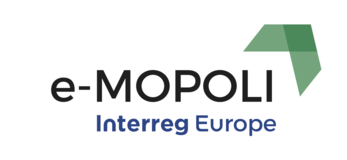Romania needs a roadmap for decarbonizing the transport sector, a transition in line with the scale and speed prescribed by the scientific community and which would make an equitable contribution to reducing pollution, limiting global warming by 1.5 ° C and combating weather events. extremes associated with climate change.
In this respect, the NRRP that Romania developed during this period establishes the investment priorities and the necessary reforms for economic recovery and sustainable growth.
The decarbonization of the transport sector in the Bucharest-Ilfov region is based both on technological levers (the transition to alternative technologies and the increase of efficiency) but also on the systemic ones, which include the reduction of the transport need and the transition to ecological travel alternatives.
The key elements of the presented transition are the improvement of pedestrian and bicycle infrastructure in cities and the creation of significant and sustained investments in railways, trains and electric buses.
1. Railway transport - New station, suburban trains and high-speed trains in the region. The plan includes, in Component I.4 The green transition - railway transport and green urban mobility, funds destined to the modernization of the railway traffic management, for the acquisition of ecological rolling stock and the development of the metro transport.
2. Electrification of public transport and development of the network of fast charging stations will be achieved through component IV.1. Resilience fund for localities, which provides funds for changing the fleet of vehicles for public transport and providing infrastructure for public transport.
3. The extension of the network of bicycle cycle lanes will be achieved through component IV.1. Resilience fund for localities, which provides for the allocation of funds for the development and creation of infrastructure necessary for cycling and also changing the legislation in force to encourage this type of travel.
The plan also shows that “In the case of the Bucharest-Ilfov region, the subway remains one of the main means of transport, the only one that managed to support a slow increase in the number of passengers transported between 2014-2018. Although it represents only 4% of the length of the entire public transport network of the capital, the subway provides transport of approx. 30% of the total volume of passengers using public transport in Bucharest. I'm approx. 2.3 million inhabitants, and between 300,000 and 350,000 people are in daily transit, Bucharest is the city with the largest traffic jams in Europe and one of the most affected in the world, with a congestion level of 41%, reaching 8th place in the ranking of the worst in the world and first in Europe "


![[NEWS] Brescia: E-bike sharing in Brescia](/fileadmin/user_upload/tx_tevnewsevents/news/image_1664960602.jpg)
![[NEWS] Rogaland: battery-only high speed craft](/fileadmin/user_upload/tx_tevnewsevents/news/image_1664804367.png)
![[NEWS] BSC: promoting e-mobility in Gorenjska](/fileadmin/user_upload/tx_tevnewsevents/news/image_1660136312.png)
![[NEWS] BSC: new opportunities for cooperation](/fileadmin/user_upload/tx_tevnewsevents/news/image_1660136159.jpg)
![[NEWS] Rogaland: Solar power for electric airplanes](/fileadmin/user_upload/tx_tevnewsevents/news/image_1660135530.jpg)
![[NEWS] Bucharest: decarbonization of transports](/fileadmin/user_upload/tx_tevnewsevents/news/image_1656521459.jpg)
![[NEWS] Calabria: CENTRE FOR SUSTAINABLE MOBILITY](/fileadmin/user_upload/tx_tevnewsevents/news/image_1655983407.png)
![[NEWS] BSC: rental system network for bikes](/fileadmin/user_upload/tx_tevnewsevents/news/image_1655967495.png)
![[NEWS] Attica: Electromobility in Paiania](/fileadmin/user_upload/tx_tevnewsevents/news/image_1655110894.png)
![[NEWS] Attica: First e-bike festival in Athens](/fileadmin/user_upload/tx_tevnewsevents/news/image_1655110292.png)